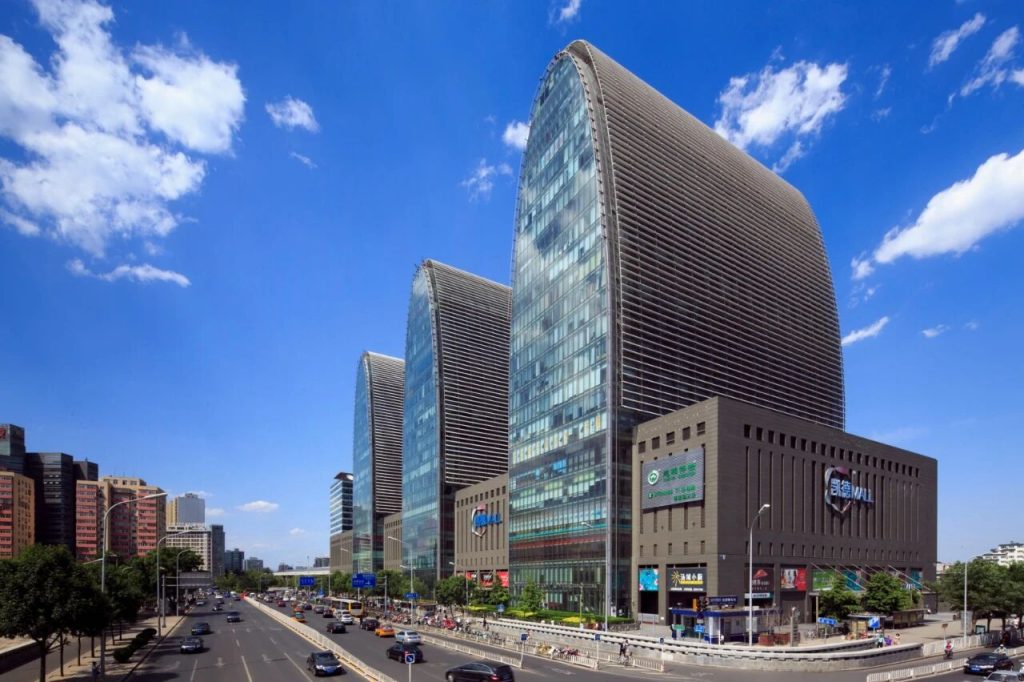The ‘Legendary’ CapitaLand Asset Management Model: Is It Impossible to Replicate in China?
Reviewing the Past Decade: The “Introduction-Imitation-Adjustment-Decline” Journey of Commercial Real Estate Asset Management in China.Over the past ten years, commercial real estate asset management in China has experienced a twisted development path, marked by cycles of introduction, imitation, adjustment, and decline. The model gained widespread attention and was highly sought after after the success of the CapitaLand model, which led many commercial real estate companies to venture into this field. However, due to industry downturns and changes in the market environment, it faced significant challenges, including departmental mergers and talent loss.At its core, asset management aims to help investors preserve and enhance the value of assets. In essence, asset management involves professional institutions or individuals leveraging the funds and asset conditions of clients (investors), in alignment with their set investment goals and risk preferences, to achieve asset preservation, appreciation, or stable returns through research, allocation, and operations. The core value of asset management lies not only in safeguarding wealth and fostering growth but also in playing a key role in optimizing resource allocation in capital markets.
This mature concept in modern financial systems is particularly well-suited to commercial real estate, where it shows strong natural synergy.Commercial real estate projects, particularly shopping malls, have the characteristics of large investment scale, long development cycles, and slow capital recovery. However, once they mature, their cash flows become relatively stable and highly predictable. This makes commercial real estate not just a space operation asset but also a financially-oriented investment product. For developers or investors, commercial real estate is not simply about “building and renting out” but involves utilizing professional management and capital methods at different stages to enhance asset value and capital returns.Specifically:Early Development Stage: Investors primarily face risks related to site selection, project positioning, and capital investment.Cultivation Stage: Focus shifts to tenant acquisition and operational optimization to mitigate operational risks.Maturity Stage: Returns are realized through capital market exits, fund operations, or REITs listings.From this perspective, commercial real estate asset management is fundamentally an extension of operational management but also a natural product of financial logic.

CapitaLand’s Model: A Unique Approach to Asset Management.The concept of asset management in China’s commercial real estate sector was introduced by CapitaLand Group. As a leading real estate group in Asia, CapitaLand has been deeply involved in real estate fund operations for years. By 2013, its asset management scale had reached 392 billion SGD, establishing an “investment property growth channel” centered around real estate funds.The core logic of the CapitaLand model is clear and straightforward:From land acquisition, the group develops and incubates projects internally or through development funds.After the project opens, private equity funds are injected for further development.Ultimately, value is realized and steady returns are achieved through REITs.This model balances development, operations, and capital exit, exemplifying the financialization of real estate thinking. To support this model, CapitaLand established its investment and asset management departments early on as core functions, overseeing investment, financing, and fund management activities. In this structure, the asset management team is not merely an “assistant” to the operations department but serves as the “leader” linking fund operations with the capital markets.
For example, the CapitaLand MALL Xizhimen project is currently the largest and highest-grossing project in CapitaLand China Trust (CLCT), with an expected income of 300 million CNY and a net property income (NPI) of 210 million CNY in 2024. It contributes 16% to CLCT’s total portfolio.The journey of this project started in 2006 when CapitaLand set up the CapitaLand China Incubator Fund, a private equity fund with a scale of USD 425 million, aimed at investing in commercial properties in China that were nearing completion or required redevelopment. In 2009, the fund acquired the nearly-completed Xizhimen project from Hualian. After about a year of adjustments and leasing preparations, the CapitaLand MALL Xizhimen opened in October 2007. In November of that year, CLCT acquired the project from the incubator fund, and despite the 2008 financial crisis, the deal was finalized in February 2008. This transaction enabled the incubator fund’s investors to realize exceedingly high returns, with an IRR well beyond the investment targets.Following the acquisition, CLCT’s asset size increased by 47.1%, and its dividend payout rose by 10.3%. This transaction clearly demonstrated the role of CapitaLand’s investment and asset management team in boosting asset value and delivering capital returns.
The Challenges and Complexities of Replicating the CapitaLand Model in China.While CapitaLand’s asset management model has worked well, several preconditions must be met for success:Commercial independence from real estate development companies, allowing independent investment behavior.Having a large number of counterparties and diverse exit channels.Being in a mature capital market with a deep understanding of market cycles.In the investment-financing-management-exit chain, management refers to commercial operations, while investment and exit are the core of asset management. Deciding what projects to buy/invest in, and when to exit, requires accurate future yield projections, a deep understanding of macroeconomic cycles, and a mature, multilayered financial market. The lack of these conditions is why asset management has struggled to truly take root in other domestic commercial real estate companies.Exploring the Domestic Market’s Approach to Asset Management.With CapitaLand entering the Chinese market, many domestic real estate developers have tried to replicate its asset management model. About ten years ago, numerous developers set up asset management departments or similar roles.

However, due to genetic differences in company culture, the asset management mindset in Chinese firms often stems from a traditional real estate development perspective, which sharply contrasts with CapitaLand’s finance-driven asset management model.In the early stages of development, Chinese commercial real estate relied heavily on profits from residential projects. In this context, the asset management function often played a supporting role, focusing mainly on basic tasks like project positioning, market analysis, and operational evaluation. Over time, as commercial real estate projects like shopping centers matured, companies shifted their focus to enhancing operational efficiency, discovering asset potential, and increasing asset value. This shift has made asset management increasingly important.Two representative asset management models have emerged:CapitaLand’s model — focusing on asset returns and capital operations, with an emphasis on long-term value growth and the use of REITs for exits.Local developer models — represented by companies like Wanda and New World, which prioritize operational management to meet short-term performance targets.Both models coexist in the domestic market, shaped by the developers’ strategic positioning and resource advantages, and contribute to the growth of the asset management industry.
The Future of Asset Management in China’s Commercial Real Estate Market.Currently, commercial real estate asset management in China faces many challenges, particularly in light of market fluctuations and policy adjustments. As real estate developers cut back on heavy asset investments and instead pursue a “light asset” strategy, the focus has shifted to providing management services for other projects, generating revenue from management fees. However, the light asset model has its limitations: it fails to benefit from asset appreciation and often leads to a focus on short-term operational performance rather than long-term value growth.Despite these challenges, REITs have opened a new capital channel for commercial real estate in China, offering fresh opportunities for development. The C-REITs market is still in its early stages but holds great promise for the future, especially for shopping centers and commercial properties.As the market matures, asset management positions will once again gain importance, and professional expertise will be further emphasized. In the next 3-5 years, commercial real estate companies will focus on enhancing asset management capabilities, shifting from auxiliary roles to becoming key drivers in connecting corporate strategy with project execution, and linking capital markets with operational activities.